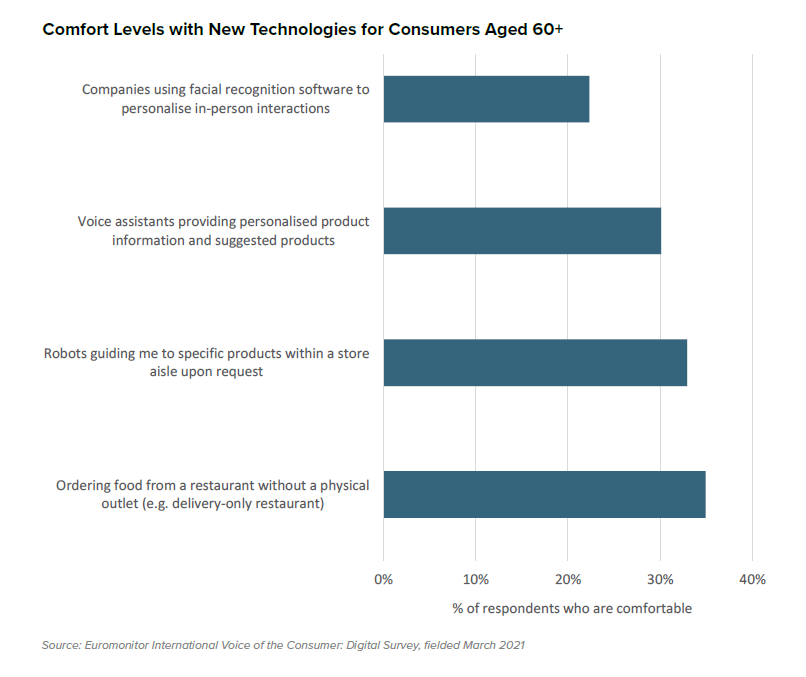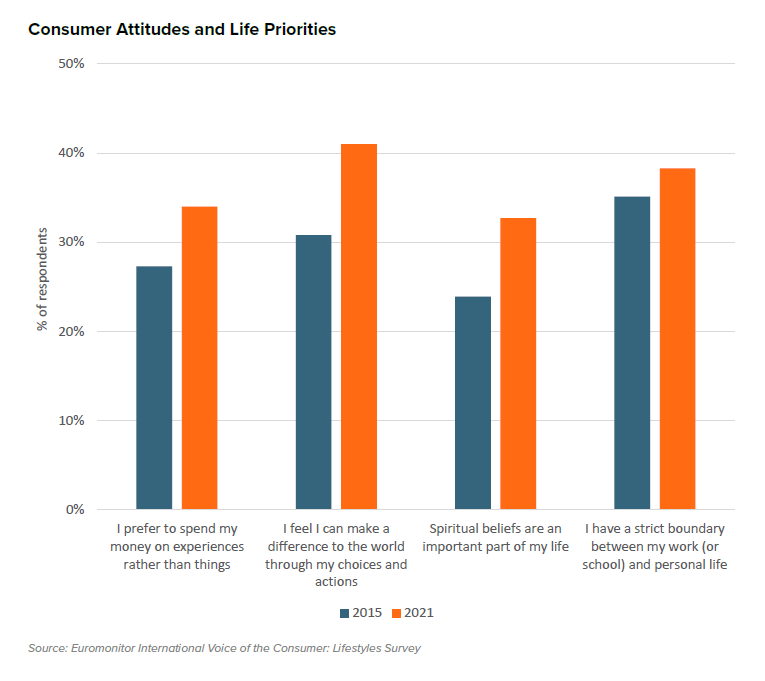Top 10 Global Consumer Trends to watch in 2022
Change was the only constant over the past two years. Resilience and adaptability were tested in 2021, forcing consumers to relinquish control and embrace ambiguity. This year, consumers are taking back the reins and paving a path forward based on their passions and values.
Based on Euromonitor International’s Top 10 Global Consumer Trends 2022 report, Retail in Asia reveals the emerging and fast-moving trends and personas that are expected to gain traction in 2022:
Climate Changers
Eco-anxiety and the climate emergency drive environmental activism for a net-zero economy. In 2021, 67 percent of global consumers tried to have a positive impact on the environment through their everyday actions. They expect brands to step up and are taking action through the products they purchase.
To respond, businesses are tapping into the growing market for carbon neutrality. Companies are adjusting their portfolios to meet consumer demand for products with a lower planetary and ecological footprint.
Backup Planners
Due to limited resources, consumers are struggling to secure their go-to products. They find creative solutions to purchase or search for next best options. 28 percent of consumers tried to purchase locally sourced products and services in 2021.
Localisation and optimisation will become the norm. Supply chain shortages are forcing businesses to pivot and provide new solutions for customers to access products and services.
Digital Seniors
Older consumers become savvier tech users and are empowered to make purchases through the digital channel.
Asia Pacific is the home to the largest number of older people in the world and is rapidly ageing. The population in Asia Pacific aged 65+ will grow a massive 95 percent between 2021 and 2040 to reach over 767 million by 2040.
According to the survey, digital seniors in Asia Pacific are more motivated than in any other region to buy online due to product information, comparisons and reviews at their fingertips. Over a quarter of respondents in Asia said that this was a key motivating factor, compared to 19 percent in North America.
Businesses have an opportunity to tailor their digital experience to target and meet the needs of this expanded online audience.

Financial Aficionados
Uncertainty, instability and lockdowns caused certain consumers like “Thoughtful Thrifters” to spend less and save more. Those with discretionary income became Financial Aficionados, increasing financial literacy and finding alternate income streams. More than half of global consumers believe they will be better off financially in the next five years.
The banked population across emerging and developed countries continues to increase, giving consumers access to money management tools. Businesses are capitalising on this newfound financial freedom and are responding with resources that give consumers more control and confidence. Retailers and brands should collaborate with financial service corporations to facilitate alternate forms of payment.
The Great Life Refresh
Consumers now focus on personal growth and wellbeing, making drastic life changes that reflect their values, passions and purpose. With this, consumers now have a higher appreciation for work-life balance. They are changing careers or leaving the workforce entirely to discover or pursue their purpose.
Companies catering to this trend stand to be seen as partners, helping consumers adapt to a new way of life. Businesses should tailor marketing to acknowledge and support consumers’ decisions to take action.

The Metaverse Movement
With strict social distancing requirements, consumers learned how to stay connected. Consumers are embracing immersive, 3D digital ecosystems to socialize with communities. Global sales of AR/VR headsets grew 56 percent from 2017 to 2021, reaching US$ 2.6 billion last year.
Brands, for example fashion brands and retailers, are leveraging social platforms such as TikTok to crowdsource content and designs, promote products and train associates on how to build followings.
Pursuit of Preloved
Consumers are moving from an owning to an experiencing mindset. Secondhand shopping and peer-to-peer marketplaces flourish as consumers seek unique, affordable and sustainable items. One-fifth of consumers will consider increasing purchases of secondhand items in the future.
Companies are implementing new business models and embracing the circular economy to respond. This trend has been prevalent in the apparel industry for years but is expanding into other fast-moving consumer goods.

Rural Urbanites
Suburban and rural communities offer more spacious housing and greener scenery. Last year, we expected consumers to relocate to rural areas temporarily or spend more time in nature. This year, “Rural Urbanites” are making this move permanent.
Not all consumers are ready to give up urban life. The need for green spaces near homes and faster, cleaner commutes is reshaping dwelling preferences for “Rural Urbanites” who stay in the city.
The shift would result in new business opportunities emerging alongside this mass relocation influx as consumers are moving both within and beyond city limits.
With this trend, brands need to adjust their strategies to retain customers. Businesses that strengthen e-commerce distribution, expand sustainable product lines and cater to Rural Urbanites will emerge as winners.
Self-Love Seekers
Acceptance, self-care and inclusion are at the forefront of lifestyle choices and spending habits as consumers embrace their truest selves. These consumers invest in taking care of their bodies and minds, splurging in ways that match their lifestyles.
Products that evoke physical, emotional or spiritual wellbeing will resonate and enhance the lives of these Self-Love Seekers, resulting in better customer loyalty.
The Socialisation Paradox
Fluctuating comfort levels create a conflicting return to pre-pandemic life. Certain consumes are eager, whilst others are hesitant, to resume their normal activities. In 2021, 76 percent of global consumers took health and safety precautions when leaving home.
The Socialisation Paradox is a behavioral phase influencing consumer habits. Consumers want to socialise but demand a flexible approach. Businesses should be receptive and provide a seamless experience with innovative and adaptive solutions.
In today’s world, past purchasing habits do not necessarily imply brand loyalty. Customers are moving. Businesses must move with them or risk losing them. Businesses need to evolve as quickly to meet consumers on their terms. Businesses should consider partnerships with other players across sectors to share resources, expand reach and achieve objectives beyond their current operational capabilities.
Source: Retail in Asia




